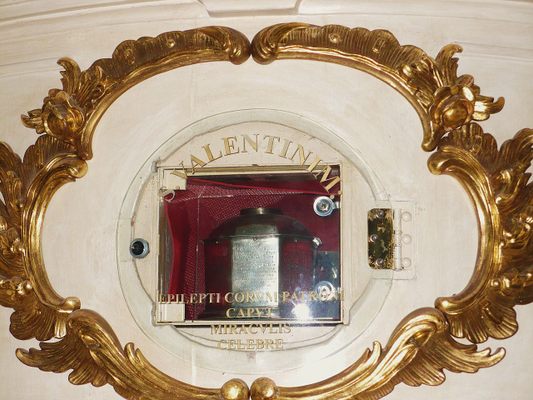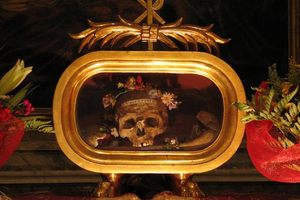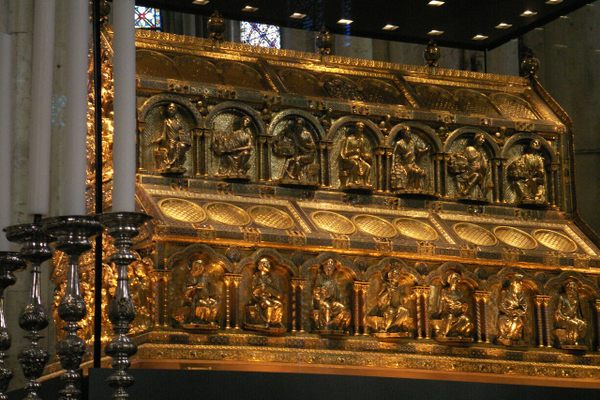About
Preserved in a small silver reliquary in a parish church in Chelmno, a bit of bone is revered as the skull of St. Valentine, patron saint of lovers (as well as bee keepers and epilepsy, among other things).
The relics have been in the possession of the church for "several hundred years" and are the focal point of the city's annual celebrations on February 14. The only problem is that St. Valentine's skull is already on display in Rome.
A number of churches around the world claim to have pieces of St. Valentine on display. Though not much is known for certain about the origin of these relics, the Catholic church does recognize multiple saints known as Valentine. At least two of them lived in Italy in the 3rd century, and both were executed during the reign of the Roman Emperor Claudius Gothicus.
Many years passed between the deaths of these martyrs and the distribution of their relics. Over time, the stories of these men (and potentially other Valentines) have merged into a single myth. In 496, Pope Gelasius I declared February 14 a feast day dedicated to St. Valentine.
The silver reliquary in Chelmno dates to around 1630. In 1880 is was described as “the saint’s head, or rather a small fragment of it. The relic is placed in an octagonal reliquary which is made of silver, is one foot high and weighs about three pounds. On top of it there is a round dome-shaped lid where the relic is kept and where it can be seen and kissed through the glass. The relic is the size of about two fingers.”
An altar devoted to St. Valentine sits next to the main altar, decorated with a painting of the martyr’s decapitation.
Related Tags
Published
February 14, 2013































